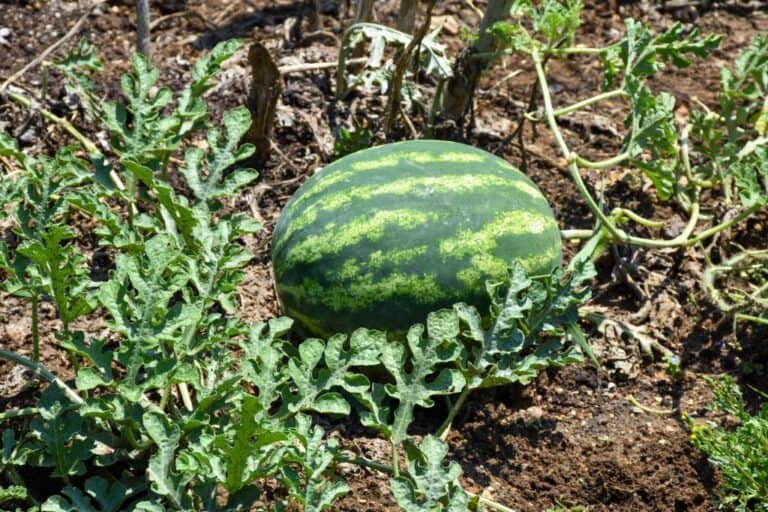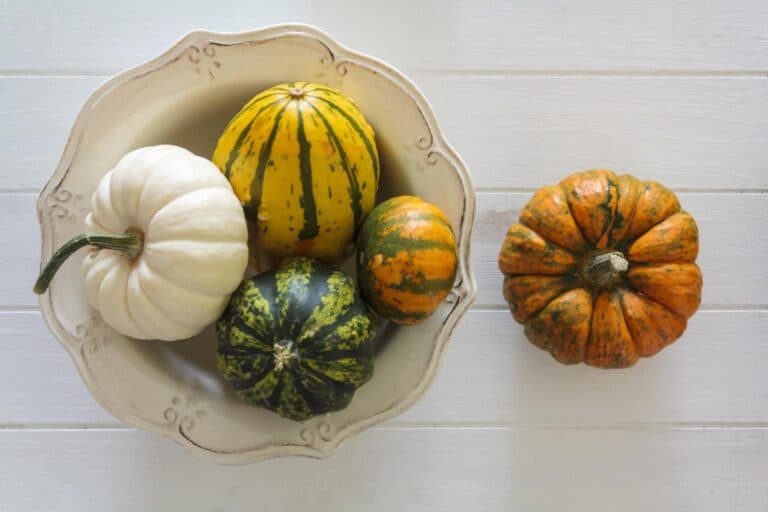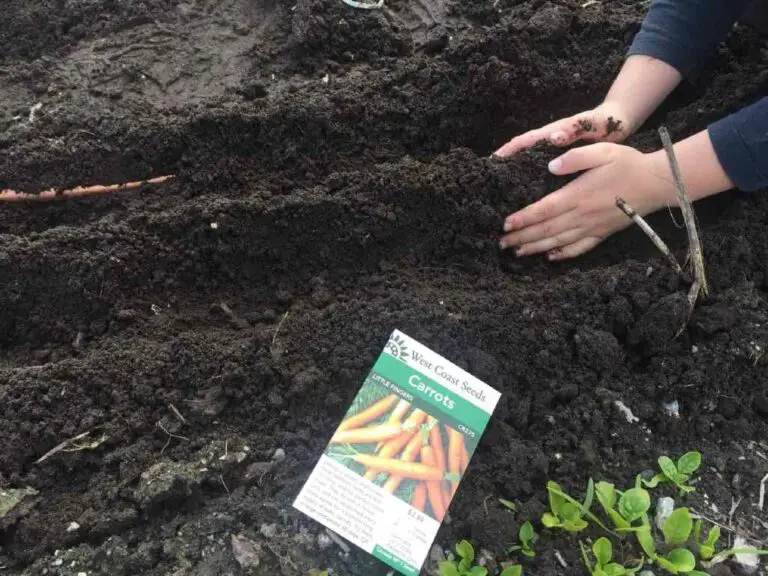Why Are Bell Peppers Different Colors? (Do They Taste Different?)
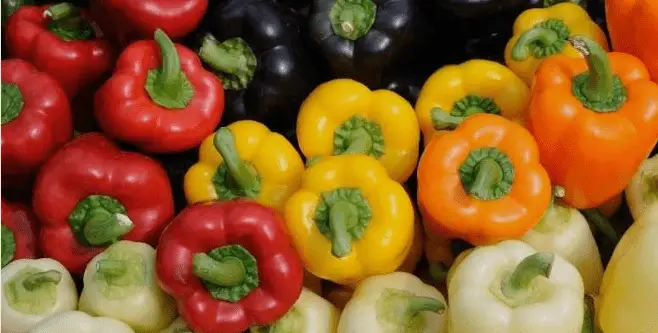
Bell peppers are a variety of peppers that come in different colors, including red, orange, yellow, and green. The different colors of bell peppers come from the different types of pigments they contain.
Some local stores sell different colors with different price tags. Green bell peppers are the cheapest. Red ones are the most pricey. This is reflected in how they cost as they ripen. Yellow and orange, fall somewhere in the middle, but they can cost as much as the red one.
They all have the same fundamental form and taste, but is there anything more than the different colors? Yes, and there’s a lot more.
So, why do bell peppers come in different colors, including the green pepper, the orange pepper, and the red pepper? The answer is simple. Bell peppers are just different varieties. They have been bred to make fruits of different colors.
The different colors of bell peppers can provide health benefits. Each color contains a different blend of vitamins and minerals.
Why Are Bell Peppers Different Colors?
You may have wondered if all the bell pepper colors came from the same plant. In some cases, they do! There are two main factors that determine a pepper’s color:
- The variety of bell peppers
- Harvesting time and ripening level
Bell peppers have different colors because of the variety of bell pepper plants they come from. Different varieties have different genes that release different chemicals as they ripen.
But if the same variety of bell peppers have different colors, it is because they are at different levels of ripeness. They were harvested at different times.
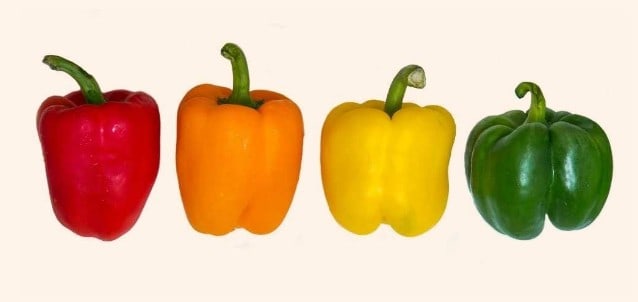
The pigment of a green bell pepper is mostly chlorophyll. Lutein and beta-carotene create the yellow and orange pigments. Anthocyanins make the red and purple hues.
The other colors of bell peppers are the result of different mutations that affect different parts of the plant’s life cycle.
For example, the yellow bell pepper is the result of a mutation that causes the plant to stop producing chlorophyll earlier in its life cycle. It has the most lutein and zeaxanthin, which results in a yellow pepper.
There is a big misconception about the different colors of bell peppers. The misconception is that the different colored bell peppers in the store are all from the same plant and are picked at varying times of ripeness.
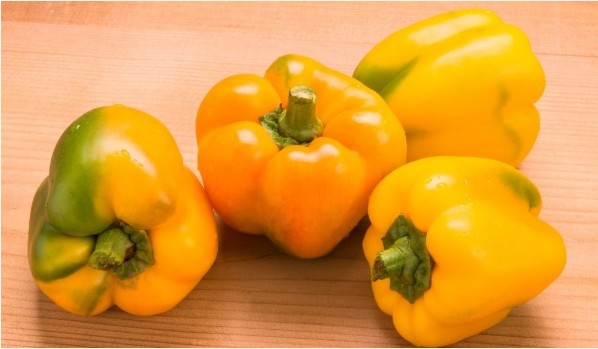
It’s true that a bell pepper can transition from green to orange to red, but most red varieties will turn directly from green to red.
If you have a variety that turns different colors as it matures, it would be in between colors. It looks something like the bell peppers above. The color is not the perfectly yellow, orange, and red bell peppers found in the store that come from different varieties of bell pepper plants.
When Will Bell Peppers Ripen Off the Vine?
Bell peppers will continue to ripen after they are picked. But, they will not become as colorful, sweet, or nutritious as if left on the vine.
Sometimes an immaturely picked green bell pepper will not turn any color once off the vine, highlighting a significant difference between green and other bell peppers in terms of ripening. The ones that are a darker green or show some color spot changes are further along and have a better chance of turning color off the vine.
To speed up the ripening process, keep the peppers in a warm area above 70 degrees, a useful tip for those growing bell peppers. Placing the veggies in sunlight will help them ripen. Placing them in proximity to other ripe vegetables and fruits, like bananas, apples, or other ripe bell peppers that release ethylene gas, will help them ripen faster.
Be careful to check on your bell peppers often, so they don’t get overripe and start to rot. Keeping the peppers in a dark and cool area below 55 degrees will slow the ripening process. Bell peppers should be kept in the refrigerator for two weeks.
Do Green Bell Peppers Turn Red?
Some green bell peppers turn red, others turn yellow, orange, purple, or brown. Green bell peppers are usually unripened. They come in colorful varieties, mainly the popular red, yellow, and orange ones.
As bell peppers ripen, they change color and become sweeter, as well as developing a higher nutritional value. While a green bell pepper is still very nutritious, a red bell pepper can have 2-3x the amount of vitamin C, 10x the vitamin A, and 11x the beta-carotene.
There are varieties of bell peppers that stay green even through maturity, but those varieties are rarely grown. The green bell peppers in stores are immature versions of bell pepper varieties. They would have turned red, yellow, or orange if left on the vine to ripen.
Why Are Green Bell Peppers Cheaper?
The price of bell peppers at the grocery store can vary greatly, depending on the color of the pepper. For example, green bell pepper is usually cheaper than red or yellow bell pepper. So, what makes green bell peppers cheaper?
One reason is that green bell peppers are less ripe than other colors of bell peppers. Since they are picked early, they require fewer things like fertilizer, water, and care.
Being picked early also means the growers are freeing up space for something else to grow. There is less risk of disease and blemishes that peppers get when they stay on the vine. All of these factors lead to green bell peppers being less expensive than their colorful counterparts.
As a pepper ripens, its flavor becomes sweeter, and its color becomes more vibrant. This means that red and yellow bell peppers are typically more expensive than green bell peppers.
Another reason green bell peppers are cheaper is that they are less in demand. Interestingly, they have the lowest nutritional value because they were harvested earlier. Green bell peppers are used in a variety of recipes, both savory and sweet. They are also a popular ingredient in salads. As a result, there is always a high demand for them at the grocery store.
When Do Bell Peppers Change Color?
Not all bell peppers will turn color, but most varieties will. This will happen if left on the vine to reach full ripeness. The color of bell peppers changes as they ripen, which is a fascinating aspect for those interested in growing bell peppers.
The green bell peppers are the unripe fruit. After the green bell peppers reach their full size, about 3×4 inches, they will turn color in 2-4 weeks.
As the pepper matures, it will change color to yellow, then orange, and finally red. The time it takes for a bell pepper to change from one color to the next varies depending on the variety of pepper.
Does Each Type of Bell Pepper Have a Different Taste?
Bell peppers come in different colors, but do they each have their own unique taste? According to some, different colors of bell peppers do have different flavors.
For example, red bell peppers are said to be slightly sweeter and less acidic than green bell peppers. While yellow bell peppers are thought to have a fruity flavor. Orange bell peppers are said to be somewhat sweet, proving that the color isn’t the only difference between these vibrant vegetables. spicy. Finally, purple bell peppers are supposedly the sweetest of all.
The flavor or taste of the same variety of bell pepper varies greatly depending on the ripeness of the fruit. Green bell peppers taste grassier, brighter, and slightly bitter. They are compared to mature peppers and are less sweet.
As the pepper ripens, the flavor varies. Colored bell peppers, such as red, are often sweeter and less bitter than their green counterparts.
A study was conducted to determine if each bell pepper color has a different taste. Twenty-one participants were asked to rate the taste of red, orange, yellow, and green bell peppers. No significant difference in taste ratings was found between the colors. This suggests that bell peppers of all colors are equally tasty.
Whether or not you believe that each color has its own unique taste, there’s no doubt that bell peppers are a healthy addition to any diet. They’re low in calories and high in vitamins A and C. Plus, they’re a good source of fiber. So, whether you enjoy them raw or cooked, be sure to add some bell peppers to your next meal!
Which Bell Pepper Tastes the Best?
Bell peppers come in many flavors and colors. This reflects the difference between green and mature bell peppers. But which one tastes the best?
Well, that depends on your taste preferences. Some people might prefer a sweeter bell pepper, while others might prefer a more spicy pepper. There are many types of bell peppers to choose from. It can be hard to decide which is best. This is especially true when considering that some think green bell peppers are the sweetest.
Green bell peppers are picked before full ripeness while they are still immature. They have a more bitter and “green” taste than other bell peppers.
Yellow, orange, and red bell peppers found in stores have been allowed to fully ripen and have developed their best taste and nutritional content. Yellow, orange, and red bell peppers are all somewhat sweet and have a fruity taste.
There are many types of bell peppers available on the market, but which one tastes the best?
According to a recent taste test, it seems that the red bell pepper reigns supreme. Out of all the different bell peppers tested, red bell peppers were voted the favorites by participants. They described the flavor as being sweet and slightly spicy.
Stores sell yellow, orange, and red bell peppers. They have been allowed to fully ripen and develop their best taste and nutrition. If you’re looking for a tasty pepper that will add some spice to your dish, then be sure to reach for the red bell pepper.
The Best Colored Bell Pepper to Eat Raw
The best color of bell pepper to eat raw is the red bell pepper. The red bell pepper has reached full maturity, will taste sweet and fruity, and has the highest nutrient content of all the peppers.
Any of the colored varieties that have been allowed to reach full maturity are a very close second to the red bell pepper. Bell peppers that have fully ripened on the vine have the best taste and all have a higher nutrient content than the immature green bell peppers.
Green, red, orange, and yellow bell peppers differ in terms of taste, nutrient content, and ripeness. Green peppers are slightly bitter and the least sweet, while red peppers are the sweetest due to their ripeness. Yellow and orange peppers are sweeter and less bitter than green ones. As bell peppers ripen, they become sweeter.
Green peppers contain lutein and zeaxanthin, which are important for eye health. Yellow peppers contain violaxanthin, and red peppers contain capsanthin and lycopene. Red peppers are the most nutrient-dense, with high amounts of beta-carotene, calcium, iron, manganese, and lycopene. All bell pepper varieties are rich in potassium, fiber, folic acid, Vitamin A, and Vitamin C.
Multi-Color Bell Peppers
Multi-colored bell peppers are bell peppers that have been harvested while in the middle stage of ripening. Most bell peppers start off green, but some will start off pale yellow, white, or light purple.
Most bell pepper types go directly from green to their full color. But some go through various colors, like green, yellow, orange, and red, or light purple, brown, and red.
There is only one variety that I’ve found that matures into a multi-colored bell pepper, and it’s called Enjoya. I have never seen this variety in stores or from seed distributors.
Rainbow Bell Pepper Blend
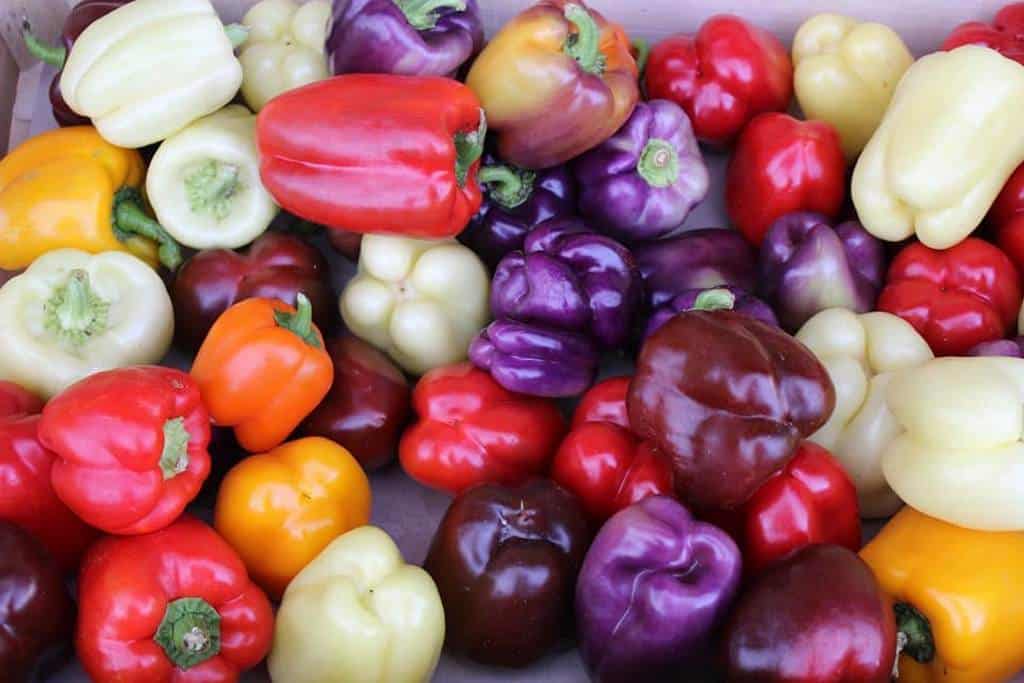
Rainbow bell pepper is a blend of seven different colored varieties of bell pepper in one seed packet. Many seed distributors offer this, which makes for a vibrant and engaging bell pepper gardening experience.
Grow a garden full of colorful bell peppers from freshly picked Capsicum annuum seeds. This combination of Bell Peppers will produce colorful fruits. They include red, orange, yellow, white, purple, and green. Its 4 to 4.5-inch diameter fruit has a shiny outer covering and a hollow core.
Conclusion
Bell peppers are a great source of antioxidants, which can help protect the body against disease. They are also a good source of vitamin C, which is important for keeping the immune system strong.
In conclusion, bell peppers come in a variety of colors because of two main factors: the degree of ripeness and the variety of bell peppers.
The different colors of the bell pepper variety are due to the presence of various types of pigments, including carotenoids and anthocyanins. The carotenoids give bell peppers their color, and they vary depending on the type of pepper.
While the science behind it is interesting, what’s even more interesting is how these peppers are used to create beautiful dishes, including the popular stuffed bell peppers. Next time you’re at the grocery store, be sure to pick up a few different colors of bell peppers to experiment with in the kitchen!
More About Why Are Bell Peppers Different Colors
http://thescienceexplorer.com/nature/do-you-know-real-difference-between-red-and-green-peppers
https://www.treehugger.com/clearing-bell-pepper-myths-4868590




